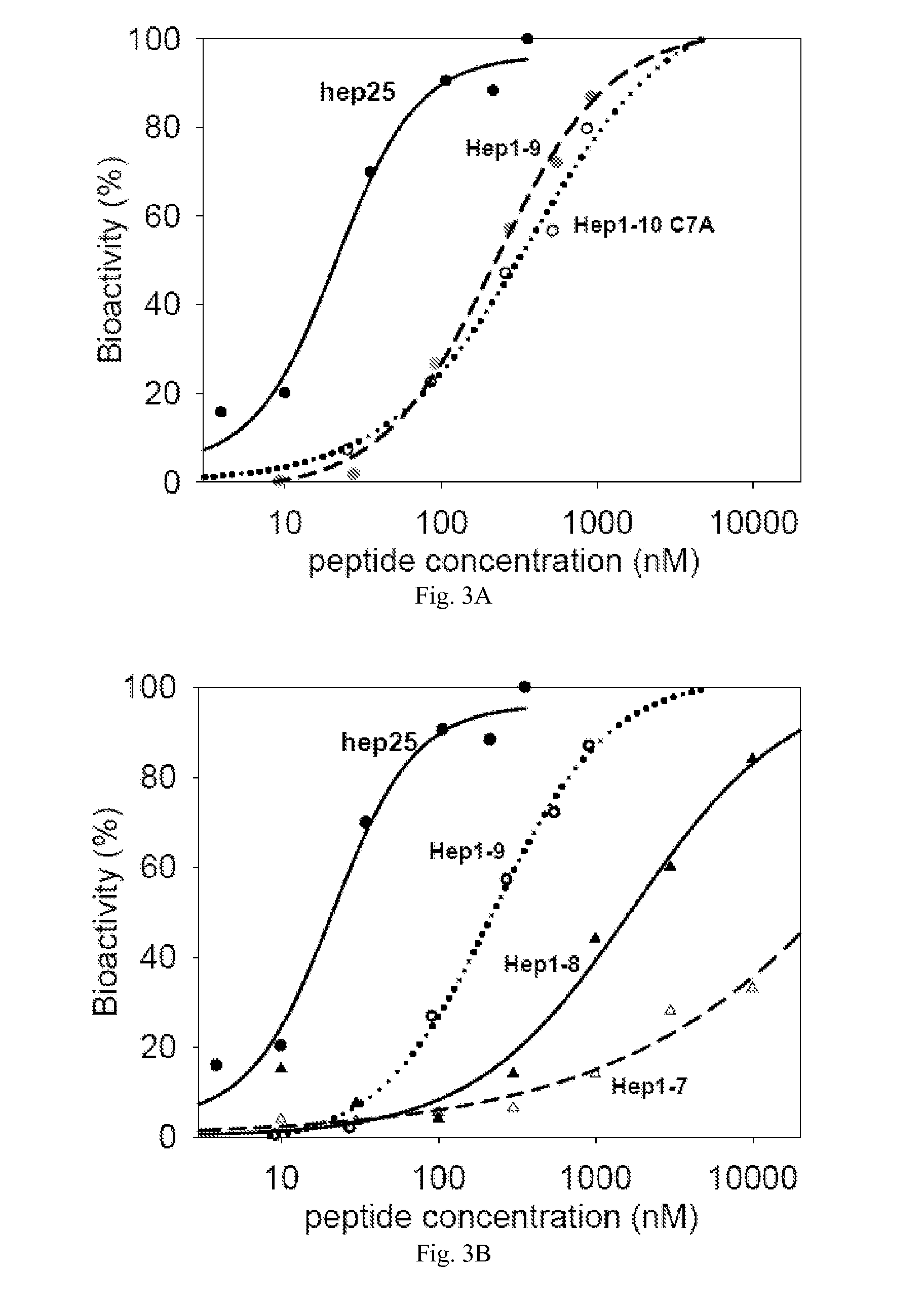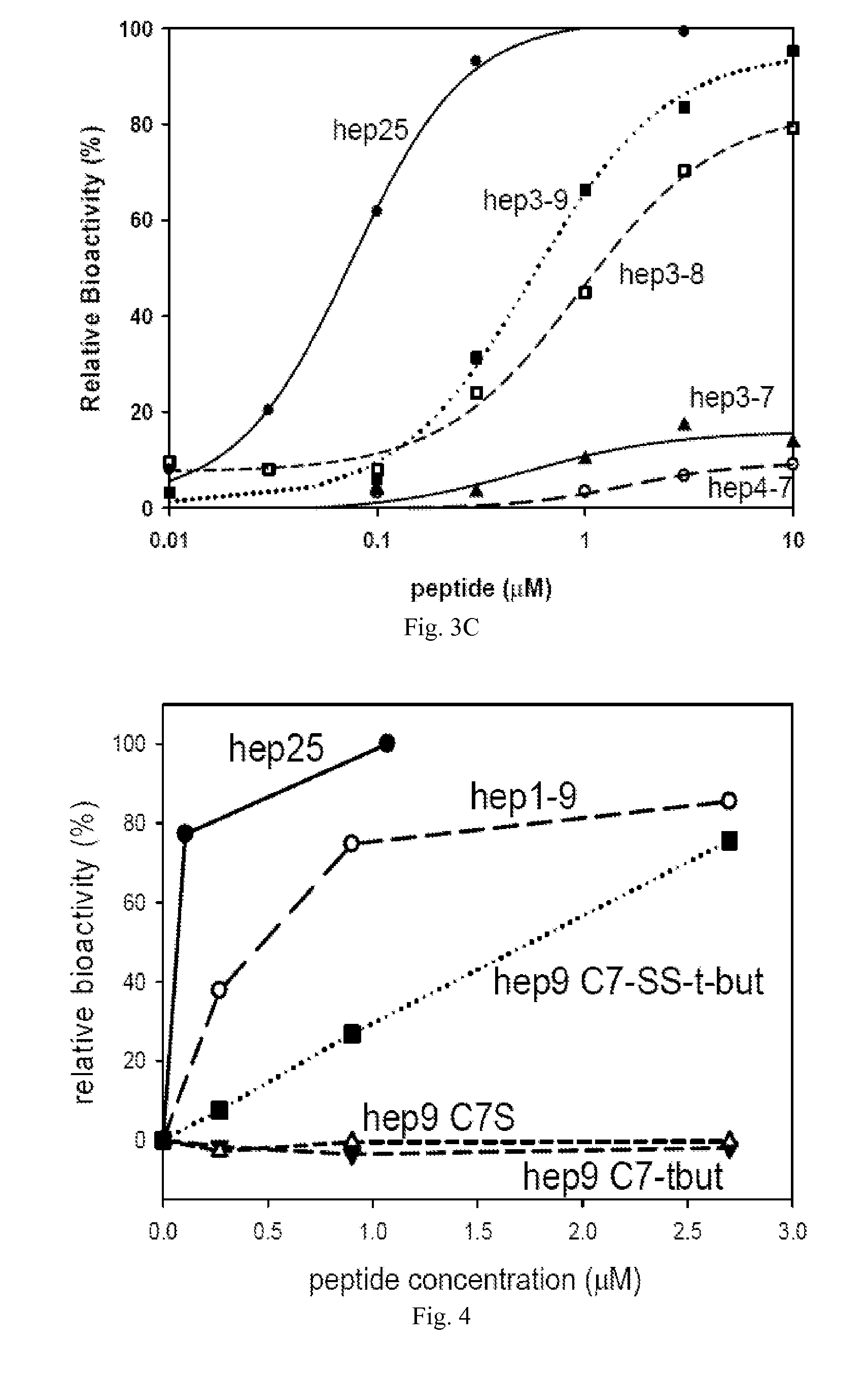Modified Mini-Hepcidin Peptides and Methods of Using Thereof
a technology of hepcidin and peptides, applied in the field of peptides, can solve the problems of iron overload, loss of iron-regulatory function, and excessive absorption of iron from the di
- Summary
- Abstract
- Description
- Claims
- Application Information
AI Technical Summary
Benefits of technology
Problems solved by technology
Method used
Image
Examples
Embodiment Construction
[0053]The present invention provides peptides which are useful in the study and treatment of diseases of iron metabolism.
[0054]As used herein, a “disease of iron metabolism” includes diseases where aberrant iron metabolism directly causes the disease, or where iron blood levels are dysregulated causing disease, or where iron dysregulation is a consequence of another disease, or where diseases can be treated by modulating iron levels, and the like. More specifically, a disease of iron metabolism according to this disclosure includes iron overload diseases, iron deficiency disorders, disorders of iron biodistribution, other disorders of iron metabolism and other disorders potentially related to iron metabolism, etc. Diseases of iron metabolism include hemochromatosis, HFE mutation hemochromatosis, ferroportin mutation hemochromatosis, transferrin receptor 2 mutation hemochromatosis, hemojuvelin mutation hemochromatosis, hepcidin mutation hemochromatosis, juvenile hemochromatosis, neon...
PUM
| Property | Measurement | Unit |
|---|---|---|
| size | aaaaa | aaaaa |
| structure | aaaaa | aaaaa |
| resistance | aaaaa | aaaaa |
Abstract
Description
Claims
Application Information
 Login to View More
Login to View More - R&D
- Intellectual Property
- Life Sciences
- Materials
- Tech Scout
- Unparalleled Data Quality
- Higher Quality Content
- 60% Fewer Hallucinations
Browse by: Latest US Patents, China's latest patents, Technical Efficacy Thesaurus, Application Domain, Technology Topic, Popular Technical Reports.
© 2025 PatSnap. All rights reserved.Legal|Privacy policy|Modern Slavery Act Transparency Statement|Sitemap|About US| Contact US: help@patsnap.com



